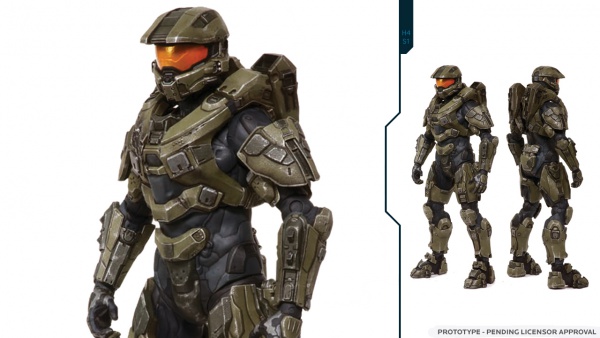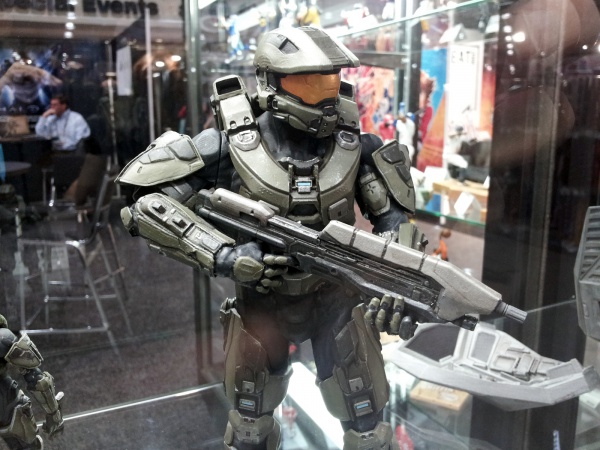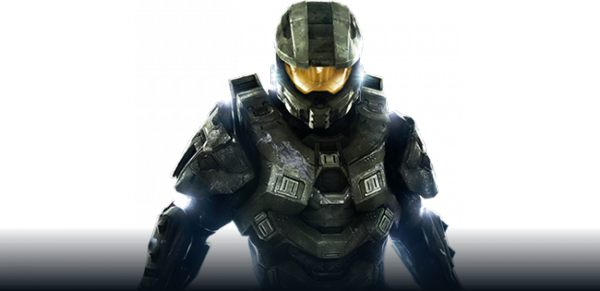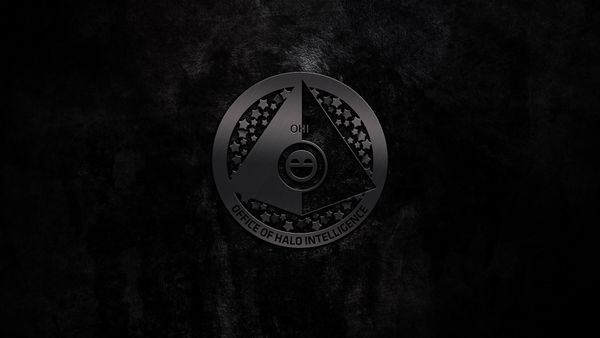« Chronique:Halo Bulletin 15/02/2012 » : différence entre les versions
Aucun résumé des modifications |
Aucun résumé des modifications |
||
| (7 versions intermédiaires par 4 utilisateurs non affichées) | |||
| Ligne 1 : | Ligne 1 : | ||
==15 février== | |||
===Original=== | |||
{{Collapse}} | |||
[[Fichier:Arc-en-ciel HB.jpg|600px|centré]] | |||
Inside the studio across a myriad of monitors is often where the magic happens. Every once in a blue moon, though, the planets—or in this case, water droplets—align and make that magic visible to all. Such was the case yesterday when a seemingly endless sea of clouds gently parted, allowing a triumphal arch to curve its way across the sky, leaving a trail of softly woven colors lingering in its wake. | |||
After coming face-to-face with such a wondrous meteorological phenomenon, two 343-ers did what anybody would have done when placed in that exact same situation: they opened wide and shot a multi-colored bow out of their favorite orifices. And then, so we could share the picture, they did the same thing again, only this time with their mouths. | |||
Since the aforementioned artists proved they are capable of emitting magic of near mythical proportions while outdoors, I thought I would talk about the magic they also produce when within the confines of our studio as well, in particular, some of the general philosophy behind the Master Chief's physical appearance in Halo 4. You did, after all, recently get a small preview of what's to come. | |||
[[Fichier:Waypoint H4 MC Update v2.jpg|600px|centré]] | |||
====Toy Fair 2012==== | |||
Today was the last day of the American International Toy Fair. Every year, this event takes over New York City's Javits Center for four entire days, bringing manufacturers and buyers from around the world together to celebrate one very important thing: toys. Whether you like the company of others or you prefer to do it by yourself, as long as you like playing, this is the event for you. | |||
Halo traditionally has a strong showing at the Toy Fair, and this year was no different. Square Enix showed off their Combat Evolved line, Mega Bloks featured various construction sets that, when put together, magically transformed into your favorite Halo characters and vehicles, and McFarlane Toys had no fewer than four different collections on display, a few of them, because of our current development cycle, being prototypes. | |||
Toy manufacturing, you see, is typically a year-long process that starts with the delivery of 3D files. For earlier games, such as Halo 2 and Halo 3, the game assets weren't hi-res enough to make figures, so oftentimes, additional sculptural changes were necessary. Halo 4 assets, however, are so hi-res, they didn't require many, if any, modifications. | |||
So, files are delivered, digital sculptures are made, and then a prototype is created to make sure everything looks right physically. This is also the point in the process where joints are checked to make sure they work. Once the prototype is perfected, it's sent to the factory along with the digital files, and the steel that will be the molds for the toys is cut. | |||
[[Fichier:Master-Chief---NY-Toy-Fair-2012.jpg|600px|centré]] | |||
Right now, with the McFarlane Toys Halo 4 Master Chief figure in particular, we're in the process of approving paints, so you'll likely see the colors shift slightly from the prototype. You'll notice small details like the glove on his undersuit changing to some extent as well. | |||
While those are small adjustments, packaging will see more dramatic changes because manufacturers often use placeholder images to create their mock-ups (hello, Halo Wars legs!). They need to show the toy buyers what they'll be producing, but they need to do this before the toys are finished in production. That's why they use FPO (for position only) elements. A picture is worth a thousand words, so the mock-ups give buyers a chance to see product details, such as size, weight, how many come in a package, additional pieces, etc. The actual details, such as if it's an Elite Zealot or an Elite Ranger, are less important at this stage than simply knowing it's a Covenant figure. | |||
The Toy Fair is all about works-in-progress. The big picture is not about the little details, and there's an understanding that minor things will change. We are ramping up the quality and pushing our partners to make the best toys they can for Halo 4. Our partners are fans, and we're fans, so we're all concerned about the same thing: getting the details right. | |||
[[Fichier:Master Chief H4 HB.png|600px|centré]] | |||
====The Halo 4 Master Chief==== | |||
While it's exciting to get a glimpse of the Halo 4 Master Chief in toy form, nothing will compare to when you finally see him in-game. I'll never forget the exact moment his design started coming together; when inspecting the smaller details of his armor, such as the scarring on his chest piece, suddenly gave insight into the depth of his character; when suddenly... the Master Chief was the Master Chief. | |||
While I can't share pictures with you quite yet, I can share some general philosophy behind his design. And Kenneth Scott, Senior Art Director, will do the same a little bit later in this Bulletin. | |||
Typically, from Halo to Halo, the Master Chief's armor has changed and adapted, and there have been fictional reasons why. With Halo 4, we're taking a different approach and focusing on the storytelling aspects of art from the design standpoint. We don't do that everywhere in the game, but we wanted to take this opportunity to really focus on him as a human being. | |||
In Halo 4, we are interested in doing something the franchise does well on the book side, and that's helping shape the narrative. Halo is a compelling and deep universe, and we want to tell the story of this bio-engineered super-soldier. | |||
One of the Master Chief's most notable physical characteristics is that he's wearing 800 pounds of tank and jet fighter. So we pulled that design into the armor and HUD. When you play Halo 4, it's important you understand that you're more than just a gun on the screen. To give you that feeling, we have represented that weight with player physics, without interrupting crosshair and shooting accuracy. | |||
When we first looked at the Chief's armor, we studied what was done in Reach. We knew he needed to be understood as a nimble yet heavy superhero, and contrast that with Reach armor design that was more on the bulky side. Our goal is to hit that sweet spot where we represent what is fictionally true about the Chief while making sure you feel like you're a super-powerful human being when you're playing him. | |||
There's a lot of dark history in the fiction, but the Master Chief has always been an aspirational character. In fact, the Chief's looking up is important to understanding his character. What's interesting is that we have an opportunity to use that understanding of the Chief to tell different stories with subtle physical cues. As we develop the visual ID, the Chief's current head-tilt is in an interesting territory where he's typically looking up into the danger that he needs to conquer, but the camera tilt is potentially posing a question. Is he looking up, or is the camera tilted so that he's actually looking down? | |||
[[Fichier:HB-OHI wallpaper.jpg|600px|centré]] | |||
====Office of Halo Intelligence: Part 4==== | |||
To provide you with additional insight into the Master Chief's design process, I coerced, er, asked, Kenneth Scott, Senior Art Director of Halo 4, to write this week's OHI entry. He kindly acquiesced, so here are his thoughts on this subject matter. | |||
{{quote | |||
|texte=Big thanks to Jessica for dragging me gently into this week's OHI. The 343 Art Team (and 343 in general) is thundering on all cylinders, and the seismic rumble has the neighbors all up in arms. When your landlord is the UNSC, you tend to giggle when the homeowner association mail starts to pile up! | |||
With Chief making an appearance at the NY Toy Fair, the internet has bubbled with lots of questions around Chief's design changes. Having cut my first game developer experience on Daikatana, I've developed a healthy respect and fear of the internet. I will step onto a message board with all the cautious ginger one would employ pulling lost forks out of a sink garbage disposal. I did want to risk mangled finger burger to talk a little about some of what brought us to our current design. | |||
Above all, we wanted the player to really feel what it's like to be the Master Chief. This manifests itself in a lot of ways, and for those who read the Fall of Reach, there's a lot of character depth behind that helmet that has yet to make its way into the game experience. Every person who was allowed to touch him had to, HAD TO, understand his history as a person. The Chief's origin is pretty sad and grim: A strong, vibrant child stolen from his parents, he underwent dangerous bioengineering that destroyed the weaker of his friends, and trained to stomp out human Insurrectionists. Pretty morally nebulous beginnings for someone who ultimately saved humanity. Of all FPS heroes, he is distinct in that his arc is aspirational and not a cynical view of the universe. | |||
A big focus on the Chief's armor was his physicality and putting the player in those mighty shoes. Getting that weight across in the design had us looking at a lot of contemporary military vehicles, and we pushed detail and form into the armor that implied that history. This is the bleeding edge of military technology. | |||
A Spartan tossing his chest plate should feel like an anvil dropping.... | |||
A Spartan sprinting across concrete should be a stealthy whisper.... | |||
Putting on your helmet should feel like powering up an F-15E.... | |||
These are the sorts of experiences we want to give the players. | |||
|auteur=Kenneth | |||
}} | |||
The Chief has been fighting for decades, and while he has always triumphed in the end, it boggles the mind to think about how many millions of rockets, plasma blasts, red-hot spikes, and bullets have been fired at him over the course of all his adventures. Although a few of those were lucky enough to graze his armor, none of them could keep him down. But the Chief has new adventures coming his way.... | |||
<3, | |||
bs angel | |||
P.S. I have not forgotten I owe you some audio information. Let's just consider that "coming soon." | |||
Discuss. | |||
{{Collapse-end}} | |||
==Source== | |||
*[http://halo.bungie.org/halobulletins/37 Halo.Bungie.Org] | |||
{{Halo Bulletin}} | {{Halo Bulletin}} | ||
Dernière version du 13 janvier 2020 à 21:36
15 février[modifier le wikicode]
Original[modifier le wikicode]

Inside the studio across a myriad of monitors is often where the magic happens. Every once in a blue moon, though, the planets—or in this case, water droplets—align and make that magic visible to all. Such was the case yesterday when a seemingly endless sea of clouds gently parted, allowing a triumphal arch to curve its way across the sky, leaving a trail of softly woven colors lingering in its wake.
After coming face-to-face with such a wondrous meteorological phenomenon, two 343-ers did what anybody would have done when placed in that exact same situation: they opened wide and shot a multi-colored bow out of their favorite orifices. And then, so we could share the picture, they did the same thing again, only this time with their mouths.
Since the aforementioned artists proved they are capable of emitting magic of near mythical proportions while outdoors, I thought I would talk about the magic they also produce when within the confines of our studio as well, in particular, some of the general philosophy behind the Master Chief's physical appearance in Halo 4. You did, after all, recently get a small preview of what's to come.

Toy Fair 2012[modifier le wikicode]
Today was the last day of the American International Toy Fair. Every year, this event takes over New York City's Javits Center for four entire days, bringing manufacturers and buyers from around the world together to celebrate one very important thing: toys. Whether you like the company of others or you prefer to do it by yourself, as long as you like playing, this is the event for you.
Halo traditionally has a strong showing at the Toy Fair, and this year was no different. Square Enix showed off their Combat Evolved line, Mega Bloks featured various construction sets that, when put together, magically transformed into your favorite Halo characters and vehicles, and McFarlane Toys had no fewer than four different collections on display, a few of them, because of our current development cycle, being prototypes.
Toy manufacturing, you see, is typically a year-long process that starts with the delivery of 3D files. For earlier games, such as Halo 2 and Halo 3, the game assets weren't hi-res enough to make figures, so oftentimes, additional sculptural changes were necessary. Halo 4 assets, however, are so hi-res, they didn't require many, if any, modifications.
So, files are delivered, digital sculptures are made, and then a prototype is created to make sure everything looks right physically. This is also the point in the process where joints are checked to make sure they work. Once the prototype is perfected, it's sent to the factory along with the digital files, and the steel that will be the molds for the toys is cut.

Right now, with the McFarlane Toys Halo 4 Master Chief figure in particular, we're in the process of approving paints, so you'll likely see the colors shift slightly from the prototype. You'll notice small details like the glove on his undersuit changing to some extent as well.
While those are small adjustments, packaging will see more dramatic changes because manufacturers often use placeholder images to create their mock-ups (hello, Halo Wars legs!). They need to show the toy buyers what they'll be producing, but they need to do this before the toys are finished in production. That's why they use FPO (for position only) elements. A picture is worth a thousand words, so the mock-ups give buyers a chance to see product details, such as size, weight, how many come in a package, additional pieces, etc. The actual details, such as if it's an Elite Zealot or an Elite Ranger, are less important at this stage than simply knowing it's a Covenant figure.
The Toy Fair is all about works-in-progress. The big picture is not about the little details, and there's an understanding that minor things will change. We are ramping up the quality and pushing our partners to make the best toys they can for Halo 4. Our partners are fans, and we're fans, so we're all concerned about the same thing: getting the details right.

The Halo 4 Master Chief[modifier le wikicode]
While it's exciting to get a glimpse of the Halo 4 Master Chief in toy form, nothing will compare to when you finally see him in-game. I'll never forget the exact moment his design started coming together; when inspecting the smaller details of his armor, such as the scarring on his chest piece, suddenly gave insight into the depth of his character; when suddenly... the Master Chief was the Master Chief.
While I can't share pictures with you quite yet, I can share some general philosophy behind his design. And Kenneth Scott, Senior Art Director, will do the same a little bit later in this Bulletin.
Typically, from Halo to Halo, the Master Chief's armor has changed and adapted, and there have been fictional reasons why. With Halo 4, we're taking a different approach and focusing on the storytelling aspects of art from the design standpoint. We don't do that everywhere in the game, but we wanted to take this opportunity to really focus on him as a human being.
In Halo 4, we are interested in doing something the franchise does well on the book side, and that's helping shape the narrative. Halo is a compelling and deep universe, and we want to tell the story of this bio-engineered super-soldier.
One of the Master Chief's most notable physical characteristics is that he's wearing 800 pounds of tank and jet fighter. So we pulled that design into the armor and HUD. When you play Halo 4, it's important you understand that you're more than just a gun on the screen. To give you that feeling, we have represented that weight with player physics, without interrupting crosshair and shooting accuracy.
When we first looked at the Chief's armor, we studied what was done in Reach. We knew he needed to be understood as a nimble yet heavy superhero, and contrast that with Reach armor design that was more on the bulky side. Our goal is to hit that sweet spot where we represent what is fictionally true about the Chief while making sure you feel like you're a super-powerful human being when you're playing him.
There's a lot of dark history in the fiction, but the Master Chief has always been an aspirational character. In fact, the Chief's looking up is important to understanding his character. What's interesting is that we have an opportunity to use that understanding of the Chief to tell different stories with subtle physical cues. As we develop the visual ID, the Chief's current head-tilt is in an interesting territory where he's typically looking up into the danger that he needs to conquer, but the camera tilt is potentially posing a question. Is he looking up, or is the camera tilted so that he's actually looking down?

Office of Halo Intelligence: Part 4[modifier le wikicode]
To provide you with additional insight into the Master Chief's design process, I coerced, er, asked, Kenneth Scott, Senior Art Director of Halo 4, to write this week's OHI entry. He kindly acquiesced, so here are his thoughts on this subject matter.
| « | Big thanks to Jessica for dragging me gently into this week's OHI. The 343 Art Team (and 343 in general) is thundering on all cylinders, and the seismic rumble has the neighbors all up in arms. When your landlord is the UNSC, you tend to giggle when the homeowner association mail starts to pile up! With Chief making an appearance at the NY Toy Fair, the internet has bubbled with lots of questions around Chief's design changes. Having cut my first game developer experience on Daikatana, I've developed a healthy respect and fear of the internet. I will step onto a message board with all the cautious ginger one would employ pulling lost forks out of a sink garbage disposal. I did want to risk mangled finger burger to talk a little about some of what brought us to our current design. Above all, we wanted the player to really feel what it's like to be the Master Chief. This manifests itself in a lot of ways, and for those who read the Fall of Reach, there's a lot of character depth behind that helmet that has yet to make its way into the game experience. Every person who was allowed to touch him had to, HAD TO, understand his history as a person. The Chief's origin is pretty sad and grim: A strong, vibrant child stolen from his parents, he underwent dangerous bioengineering that destroyed the weaker of his friends, and trained to stomp out human Insurrectionists. Pretty morally nebulous beginnings for someone who ultimately saved humanity. Of all FPS heroes, he is distinct in that his arc is aspirational and not a cynical view of the universe. A big focus on the Chief's armor was his physicality and putting the player in those mighty shoes. Getting that weight across in the design had us looking at a lot of contemporary military vehicles, and we pushed detail and form into the armor that implied that history. This is the bleeding edge of military technology. A Spartan tossing his chest plate should feel like an anvil dropping.... A Spartan sprinting across concrete should be a stealthy whisper.... Putting on your helmet should feel like powering up an F-15E.... These are the sorts of experiences we want to give the players. Kenneth
|
» |
The Chief has been fighting for decades, and while he has always triumphed in the end, it boggles the mind to think about how many millions of rockets, plasma blasts, red-hot spikes, and bullets have been fired at him over the course of all his adventures. Although a few of those were lucky enough to graze his armor, none of them could keep him down. But the Chief has new adventures coming his way....
<3, bs angel
P.S. I have not forgotten I owe you some audio information. Let's just consider that "coming soon."
Discuss.